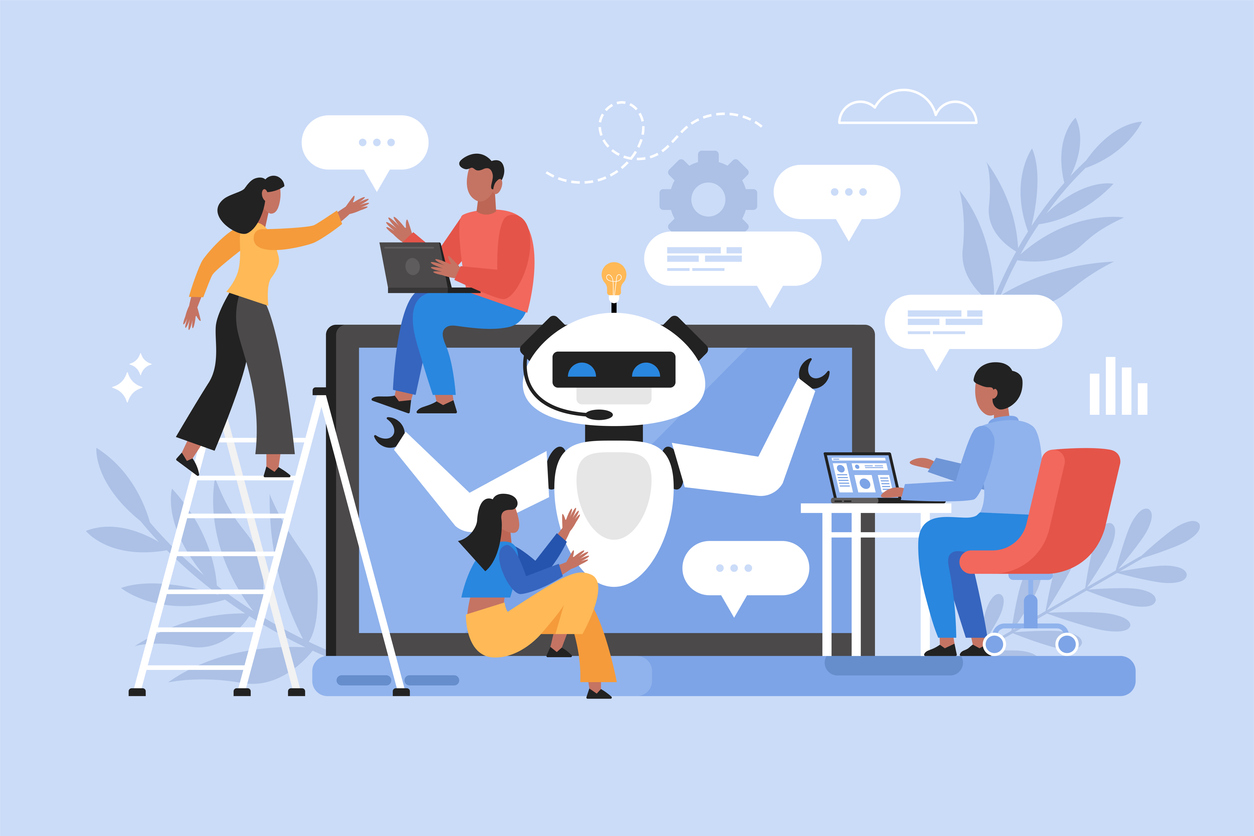Behind the scenes on the PR Council’s Guidelines on Generative AI
Ways to stay ethical and forward-thinking.

Generative AI technology is advancing at dizzying speed.
That’s why it’s more important than ever to have a code of ethics to guide and ground you as you learn and experiment.
“When it comes to generative AI, there’s the people waving the caution flag and then there are people gunning it to get on the autobahn,” Kim Sample, president of the PR Council, said with a laugh during a recent interview with PR Daily.
Attempting to strike a middle course, the PR Council recently released its first-ever Guidelines on Generative AI. This non-binding ethical framework emphasizes values such as protecting client information, transparency, accuracy, and diversity and inclusion, among other focus areas. The guidelines were created by an interdisciplinary team of ethicists, chief technology officers, DE&I professionals, corporate reputation and public affairs experts, and, of course, PR professionals. The final product was vetted by partner law firm Davis+Gilbert.
“One thing I worry about is misuse of generative AI, being sloppy about it,” Sample said. “Providing full transparency, I think can be a reputational issue for the entire industry. So we really felt like it was important to have that ethical viewpoint.”
Diversity, inclusion and bias in the AI age
One of the most in-depth sections of the guidelines focuses on the risk of bias or the erasure of diverse voices via AI.
Some of these biases can be baked directly into the AI based on the content it’s fed. Or professionals could use AI in ways that minimize the contributions and views of a diverse and inclusive community.
The guidelines caution against using “generative AI as a replacement for diverse experiences, insight, or engagement,” as well as creating “imagery, likenesses, or avatars that create the appearance of diversity instead of working with diverse talent,” among other considerations.
Sample said emphasizing inclusion was top of mind for the entire council, who see increasing diversity as a critical part of the industry’s future. She pointed to a controversy surrounding Levi’s announcement that they would use AI-generated “digital models” in a bid to increase diversity on its purchasing pages as one of the potential hazards of replacing real people with realistic art.
How much transparency is realistic?
Another cornerstone of the guidelines is being crystal clear with all stakeholders — including clients, bosses and audiences — about the use of AI.
In particular, the guidelines stress telling clients when AI has played a “substantial role” in content creation because of the copyright issues it could create.
“…Most of our members have contracts that state that all materials we produce on behalf of clients are ‘work for hire,’ meaning we assign the ownership rights of those materials to our clients,” the guidelines read. “However, that is currently impossible to do with solely AI-generated materials which could put us in violation of our contracts.”
Sample says some have questioned how realistic these guidelines are. One person even asked her if it’s necessary to disclose the use of an AI-boosted tool like Grammarly. “No, that’s ridiculous,” Sample said.
But because of the thorny copyright and ownership issues involved in both client work and AI generation, she said a high level of transparency is critical at this moment in time.
“As we all get used to the technologies, we get better at content engineering, we get better at sourcing, maybe there won’t be this requirement of transparency,” Sample said.
Sample added that it’s vital to tell employees when they’re required to disclose to their managers that they’ve used AI in their work.
Will AI replace us?
It’s time for the obligatory question in any AI article: will every PR professional be replaced with an AI server in the next five years?
Sample doesn’t think so. She explained that when she started in PR, she used to spend every weekend photocopying clips so she was more available for interesting, productive activities during the week.
Of course, now that job has been replaced with one-click PDF downloads, erasing a tedious job from our routine.
She thinks AI has the same potential to free professionals up for more creative, innovative work.
“Some people are going to be willing to settle for C-plus work that is not copyrightable,” Sample said. “But I think the smart players aren’t going to be and so there’s going to be a real need for us.”
But she does anticipate that AI will utterly change the PR field — especially when it comes to the speed at which we work and how agencies get paid. As generative AI increases the speed at which we can work, the billable hour will make less and less sense as an agency model.
The future
Obviously, we’re still in the very early stages of understanding generative AI’s power. That’s why the PR Council intends to update its guidelines on a quarterly basis, to stay abreast of new developments.
Despite its risks, Sample remains optimistic about the implications of the new technology.
“I do think that it’s a mistake if every PR professional is not becoming a student of generative AI, paying attention, reading everything and playing with it. You know, it’s really fun to play with!”
Allison Carter is executive editor of PR Daily. Follow her on Twitter or LinkedIn.







